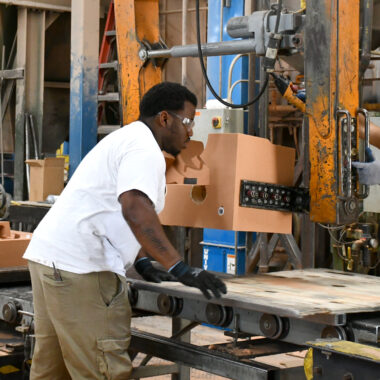Development Unleashed: Developments About Aluminum Casting
Development Unleashed: Developments About Aluminum Casting
Blog Article
Crafting Excellence: Just How to Achieve High-Quality Aluminum Castings Whenever
In the world of aluminum casting, the search of perfection is a continual journey that calls for a precise technique and a keen understanding of the intricacies involved. Attaining regular high-quality light weight aluminum castings requires a detailed understanding of the procedures, from choosing the ideal alloy to carrying out specific mold and mildew designs and diligently managing spreading specifications. However, the true proficiency lies in the capacity to execute these elements flawlessly to produce flawless spreadings each time. As we discover the ins and outs of crafting perfection in aluminum castings, revealing the essential techniques and strategies that lead to impeccable outcomes becomes critical for those pursuing excellence in this specialized area.
Understanding Aluminum Casting Procedures
Light weight aluminum casting procedures, essential in the production sector, entail the elaborate transformation of molten aluminum right into solid kinds through a collection of very carefully regulated actions. Understanding these procedures is paramount to accomplishing high-grade light weight aluminum castings regularly - about aluminum casting. The primary methods used in light weight aluminum spreading are pass away casting, sand spreading, and investment casting

Each of these procedures has its advantages and is picked based on factors like complexity, quantity, and desired surface of the aluminum casting. about aluminum casting. Understanding the intricacies of these methods is essential for manufacturers aiming to generate premium aluminum spreadings consistently
Picking the Right Light Weight Aluminum Alloy
Picking the ideal light weight aluminum alloy is an important choice in the manufacturing of top notch light weight aluminum spreadings. The option of alloy substantially influences the residential or commercial properties and qualities of the last product. Different aluminum alloys supply differing degrees of stamina, corrosion resistance, machinability, and thermal conductivity. When selecting an aluminum alloy for spreading, it is important to take into consideration the certain needs of the application to make certain ideal performance.
One of the most commonly utilized light weight aluminum alloys for spreading is A356 - about aluminum casting. For applications calling for high stamina, 7075 light weight aluminum alloy is a popular choice due to its extraordinary strength-to-weight proportion.
In addition to mechanical residential properties, factors to consider such as cost, availability, and post-casting procedures need to additionally affect the selection of the best light weight aluminum alloy. By meticulously evaluating these factors, makers can make certain the manufacturing of high-quality her response aluminum spreadings that satisfy the preferred specs.
Carrying Out Correct Mold And Mildew Layout
Developing a reliable mold and mildew style is critical for making certain the successful production of top quality aluminum spreadings. Correct mold and mildew layout plays a substantial function in attaining the wanted features of the last product. To apply an effective mold layout, factors such as product circulation, cooling prices, and component geometry must be meticulously considered.
One secret facet of mold layout is making certain proper dental filling and solidification of the aluminum within the mold cavity. This entails developing runner and gating systems that promote smooth metal circulation and protect against issues such as air entrapment or incomplete dental filling. Additionally, including air conditioning networks right into the mold layout assists regulate solidification prices and lower the danger of porosity or shrinkage problems.

Controlling Spreading Parameters

Making Certain Post-Casting Quality Checks
To maintain the high quality of aluminum spreadings, thorough post-casting high quality checks are crucial. After the casting procedure is finished, it is important to ensure that the last products meet the wanted specifications and criteria.
Dimensional accuracy is another crucial element that should be verified throughout post-casting top quality checks. Measurements of key dimensions and resistances need to be required to validate that the castings conform to the required specifications. Additionally, mechanical buildings such as firmness, tensile stamina, and influence resistance may need to be examined via material testing to make certain that the spreadings possess the essential strength and sturdiness for their desired application.
Conclusion
In final thought, accomplishing premium aluminum castings needs a complete understanding of the spreading processes, selecting the appropriate alloy, designing mold and mildews properly, regulating casting parameters thoroughly, and conducting post-casting quality checks vigilantly. By adhering to these actions, suppliers can continually create aluminum spreadings that fulfill the highest standards of top quality and efficiency.
Accomplishing consistent premium light weight aluminum castings demands a thorough grasp of the procedures, from choosing the suitable alloy to performing exact mold and mildew styles and meticulously controlling casting specifications. The key approaches used in aluminum spreading are die casting, sand spreading, and financial investment spreading.
Investment spreading, also known as precision spreading, includes developing wax patterns that are coated in ceramic to form mold and mildews.Picking the proper aluminum alloy is a crucial choice in the manufacturing of top quality aluminum spreadings.Making sure specific control over spreading parameters is crucial for you could look here keeping uniformity and quality in aluminum spreading production.
Report this page